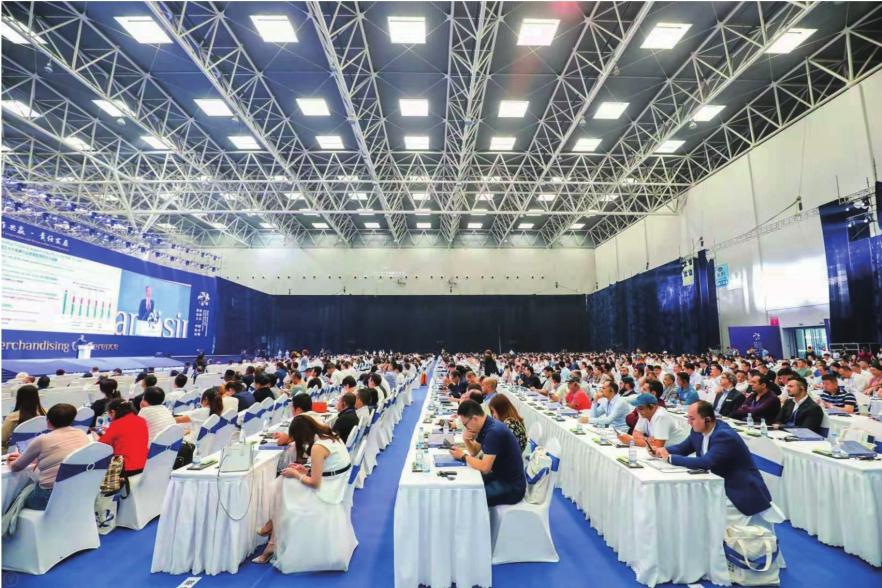Global industrial collaboration is imperative
2019-12-02

The 2nd World Textile Merchandising Conference looked into the global textile industry from the perspective of the world economic structure, exploring the road to win-win cooperation for the Chinese textile industry in the new era, interpreting the fashion development advancing with the times and the secrets of the worlds top luxury brands, and comprehensively introducing the development and future planning of Keqiao economy in Shaoxing. At the conference, a ceremony was held to jointly build a pioneering zone for worldclass textile industry clusters.
Ma Weiguang, Secretary of the CPC Shaoxing Municipal Committee, said in his speech that since the founding of the Peoples Republic of China, Shaoxings textile industry has witnessed continuous development, forming a modern textile system with a full industrial chain and a unique development model of“product + market” and “industry + city”. Shaoxing is also increasingly becoming the worlds important textile trade distribution center and the worlds fashion textile capital.
Sun Ruizhe, President of China National Textile and Apparel Council, delivered a keynote speech, pointing out that since the founding of the Peoples Republic of China 70 years ago, Chinas textile and garment industry has been adhering to open develop-ment, serving peoples livelihood, innovation and development, and responsible development, and has become the core force supporting the smooth operation of the world textile industry system as well as an important industrial platform to promote global responsibility governance. At present, the rise of emerging countries and developing countries is irreversible, and global economic and trade relations have undergone profound changes. Countries and regions along the “Belt and Road” have become a new growth point for global trade and investment. The global trading system is moving toward a new type represented by digital trade. Technology and patents have become the key elements for enterprises to participate in international competition, and green consumption has begun to rise. In 2019, Chinas textile industry presented a steady performance with pressures, while the export structure adjustment was further accelerated, and the quality of development continued to improve, showcasing some new changes including continuously enriched channel ecology, more consumers attention to quality, industrial value obtained from environmental protection, and increasingly obvious personalized production trend.
Where is the way for the development of Chinese textile brands?
In the theme forum, Han Jie, Deputy Director of Zhejiang Provincial Department of Commerce, Dr. Christian P. Schindler, Secretary General of International Textile Manufacturers Association (ITMF), Jiang Shicheng, Academician of Chinese Academy of Engineering, Lyne COHEN-SOLAL, National Consultant of fashion industry of French Ministry of Culture, Former Vice Mayor of Paris City, Chairman of LInstitut National des Métiers dArt, Simon Collins, Founder and CEO of WeDesign, former Dean of the Parsons School of Design, and Alex ROTIN, Purchasing Director of Haute Couture Department, Chanel, carried out in-depth discussions on the new path of the development of Chinese textile brands.
▲Han Jie pointed out in his speech that Keqiaos practice fully proves that to develop, to innovate and to have a better life, we must unswervingly adhere to open development. To achieve a high level of openness, we aim to promote the construction of the “Belt and Road” for a higher level of international trade and investment as well as an open platform in a new era, so as to promote international cultural and people-topeople exchanges and cooperation, and build an international and legal business environment.
▲Dr. Christian P. Schindler said in his keynote speech that since the 1980s, global textile industry exports have continued to grow, but have stagnated at around $300 billion in the past few years; however, the export of garments has been increasing, while China is the main growth driver. He pointed out that in terms of consumption patterns, the worlds physical retailing is in a stagnant state. Even in the past two years, retail sales in physical stores have seen a 2% decline, while online e-commerce has enjoyed a steady increase of 20%. The growth rate of online e-commerce in Asia is the fastest. In terms of production trends, the textile industrys equipment is running faster, with lower labor intensive and lower water consumption. This trend will not change in the next 100 years.
▲ Jiang Shicheng said that the acceleration of the new technological revolution and global industrial transformation has had a major impact on the world economic structure and competition pattern, showing several trends: first, the development of next-generation information technologies such as the mobile Internet, smart terminals, big data, cloud computing, and high-end chips, will drive many industrial transformations and innovations; second, technological innovations around new energy, climate change, space, and ocean development will be more intensive; third, emerging industries such as green economy and lowcarbon technologies are booming; fourth, life sciences and biotechnology are driving the formation of huge industries such as health, modern agriculture, bio-energy, bio-manufacturing, and environmental protection.
杂志排行
China Textile的其它文章
- Gathering international innovation and wisdom to bridge a new industrial integration
- Belt and Road Forum for Textile Cooperation convened successfully
- The 15th ATC:Sharing scientific research results and exploring future trends
- How to hook the younger set on denim
- Monforts at Techtextil India
- Insights into cotton sustainability and innovation
